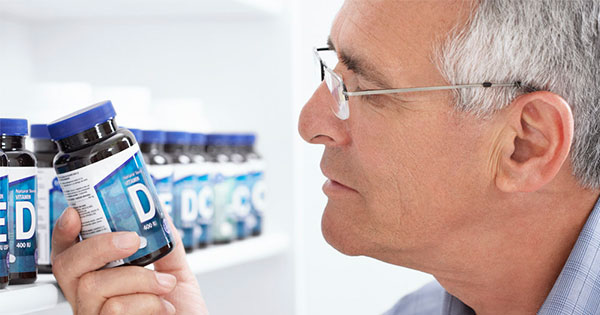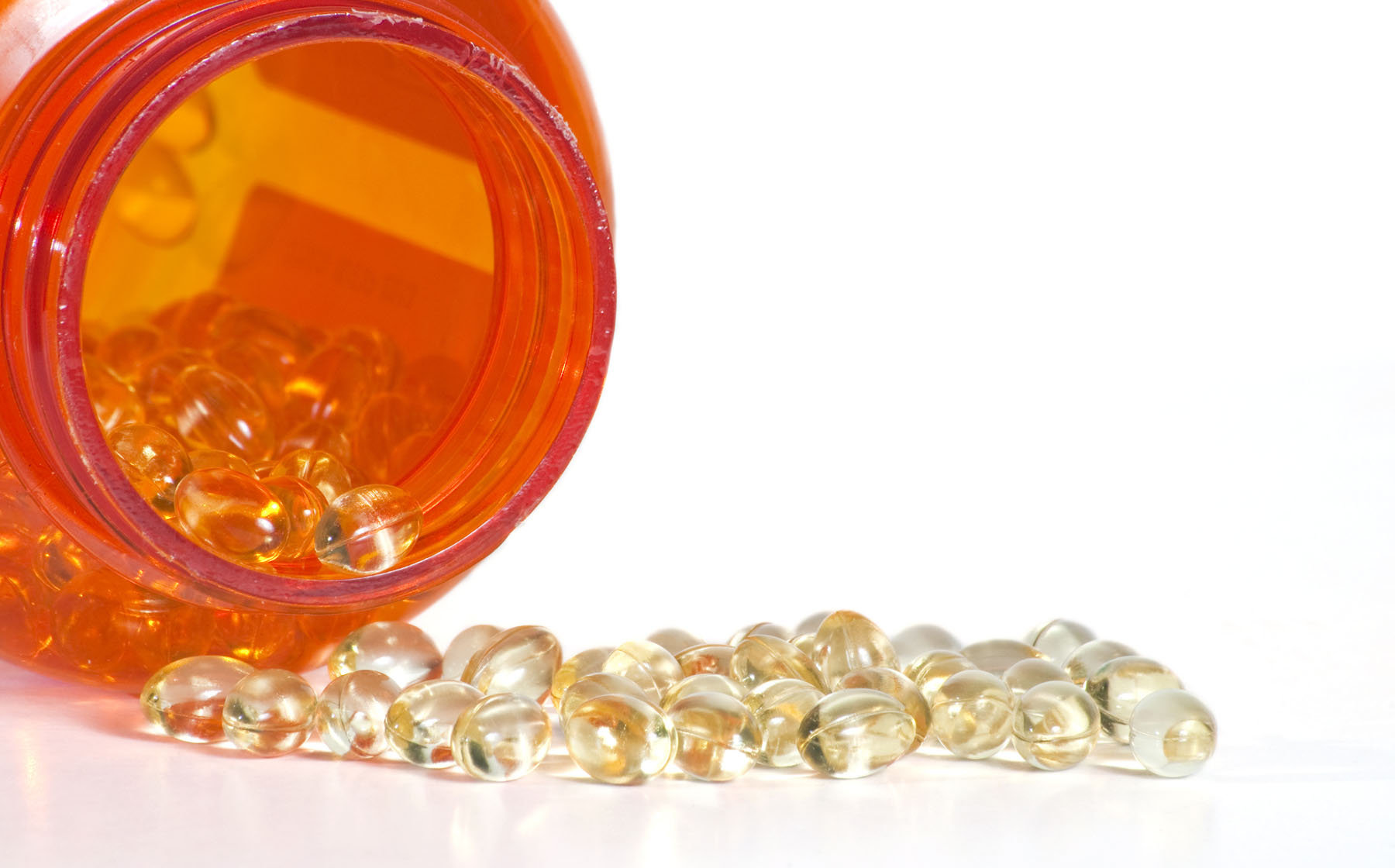Vitamin-D Deficiency
What is vitamin D?
The “sunshine” vitamin is a hot topic. Should people be exposed to the sun for their vitamin D? Are the guidelines for how much vitamin D we need adequate? Is the tolerable upper limit too low? What benefits does vitamin D have on our health? This article will discuss and respond to all of these common questions.

There are two forms of vitamin D, known as D2 and D3. Vitamin D2, also known as ergocalciferol, comes from fortified foods, plant foods, andsupplements. Vitamin D3, also known as cholecalciferol, comes from fortified foods, animal foods (fish, eggs, and liver), and can be made internally when your skin is exposed to ultraviolet (UV) radiation from the sun. Vitamin D is a fat-soluble vitamin. This means that it is stored in our fat cells for use when it is needed. It is constantly being used for calcium metabolism and bone remodeling.
The guidelines for how much vitamin D we need were updated in 2010 by the Institute of Medicine (IOM). They were set based on the evidence for bone health and assumed that there was limited sun exposure. The recommended dietary allowance (RDA) for vitamin D is as follows:
- 600 IU/day for ages 1 to 70
- 800 IU/day for over 70 years of age
- 600 IU/day for pregnant and lactating women
These recommendations have been met with a lot opposition by some experts, saying that they are too low. The evidence review that the IOM did was based on 1,000 studies. They were limited by the types of studies and availability of studies to support the benefits linking vitamin D to multiple sclerosis, heart disease, cancer.
What does vitamin D do for your health? What are symptoms and signs of vitamin D deficiency?
By the turn of the 20th century, most of the children were afflicted with rickets, a bone-deforming disease. The first observation of this disease was in the mid-1600s by Whistler and Glissen, who reported that children living in industrialized cities in Great Britain had short stature and deformities of the skeleton, especially of the lower legs. It wasn’t until 1889 that the discovery that “sunbathing” was important for preventing rickets came about.
The need for vitamin D goes way beyond preventing and treating rickets. Various researchers have claimed that vitamin D benefits are associated with the following:
- Prevention of osteoporosis and osteopenia
- Lowering blood pressure in people with hypertension
- Lowering incidence and severity of cardiovascular disorders
- Decreasing the incidence of type 2 diabetes: Research has shown that those with blood vitamin D levels over 25 ng/mL had a 43% reduced risk of developing type 2 diabetes compared with those with levels under 14 ng/mL.
- Decreasing inflammation: Research has shown a decrease in levels of C-reactive protein, a marker of inflammation, with increased levels of vitamin D to just below 21 ng/mL.
- Reducing risk of allergies in children and adolescents: A nationwide study of over 6,000 individuals showed that allergic sensitization was more common in those with vitamin D levels under 15 ng/mL versus those with levels 30 ng/mL or more.
- Decreasing dental cavities: A 47% reduced risk of cavities was found with vitamin D supplementation.
- Prevention and treatment ofdepression: Receptors for vitamin D are present on many areas of the brain including the cingulate cortex and hippocampus, which have been implicated in the pathophysiology of depression. Vitamin D is involved in numerous brain processes, making it biologically likely that this vitamin might be associated with depression and that its supplementation might play an important part in the treatment of depression.
- Possibly helping with erectile dysfunction (ED): It is not clear if increasing your serum vitamin D levels can help with ED. Many men diagnosed with ED are diagnosed with cardiovascular disease (CVD) within a few years. Vitamin D deficiency is linked with CVD, so if you are deficient in vitamin D, some researchers believe that treating this could reduce your risk of CVD and then possibly ED.
- Regulating cholesterol levels in the blood: It has been shown that without adequate sun exposure, vitamin D precursors turn to cholesterol instead of vitamin D.
- Decreasing mortality rate from certain cancers: In 1941, U.S. pathologist Frank Apperly published geographic data that demonstrated for the first time an inverse correlation between levels of UV radiation in North America and mortality rates from cancers. This means that more exposure to UV radiation (sun) leads to fewer deaths from cancers. In the meantime, since this was published, it has been confirmed that there is an association between increased risk of dying of various internal malignancies (for example, colon, breast, ovarian, melanoma, and prostate cancer) and decreasing latitude toward the equator.
- Decreasing risk of osteoarthritis: Vitamin D deficiency may increase the risk of osteoarthritis.
- Possibly helpful in prevention of fractures, improving balance, and reducing the risk of falls in the elderly: There has been some evidence suggesting that vitamin D supplementation may have these benefits, but more research needs to be done to confirm it.
- More research is needed to determine the possible benefit of vitamin D as therapy for multiple sclerosis, tuberculosis, influenza, and viral upper respiratory tract illnesses.
What causes a vitamin D deficiency?
Do you know your vitamin D level? Do you think that you could be deficient in vitamin D? With plenty of sunshine available, it may surprise you to know that an estimated 1 billion people are deficient or insufficient in vitamin D. This is estimated because undiagnosed vitamin D deficiency is common worldwide.

Limited exposure to the sun
The major source of vitamin D is natural sun, so limiting our exposure to it has the biggest impact on vitamin D deficiency. We have all heard about the dangers of skin cancer and the need for sunscreen to protect us from this disease. Unfortunately, no one discusses the dangers of not getting vitamin D from the sun and ways to compensate for it. Using a sunscreen with SPF of 30 decreases vitamin D synthesis in the skin by more than 95%. Even if you do have some exposure to the sun, the total amount of vitamin D you can produce is affected by the season, time of day, ozone amount, latitude, and number of clouds in the sky. The important thing about using the sun for vitamin D production is to know that less is more. You are better off with short regular exposures to the sun rather than prolonged exposure for many reasons. The process is not as simple as the sun hitting your skin and vitamin D appearing in your blood. What actually happens is that vitamin D3 is first transformed by a process known as hydroxylation in the liver to 25-hydroxyvitamin D3, often written as (25(OH)D3), and then again in the kidney to its active form, 1,25-dihydroxyvitamin D3, written as (1,25(OH)2D3). The level that is checked in your blood is 25-hydroxyvitamin D, often written as 25(OH)D, which includes vitamin D2 and D3. By staying in the sun, you limit this process and can actually get less vitamin D. You also have a lower risk of burning and damaging your skin with short exposures. Getting 10 to 15 minutes of sun exposure a couple of times per week can be enough for many people.
Darker skin
Melanin is what gives skin its color. Lighter skin has less melanin than darker skin. Melanin is able to absorb UVB radiation from the sun and reduce the skin’s capacity to produce vitamin D3. People with a naturally dark skin tone have natural sun protection and require at least three to five times longer exposures to make the same amount of vitamin D as a person with a white skin tone.
Obesity
Research has begun to show a relationship between BMI and vitamin D deficiency. A study done on 2,187 overweight and obese subjects found that those with a BMI above 40 had 18% lower serum vitamin D levels than those with a BMI under 40. Another study done compared the vitamin D levels of 154 obese subjects to those of 148 nonobese subjects and found that the obese subjects’ vitamin D levels were 23% lower. Some possible reasons for this are lower intakes of vitamin D, less exposure to sunlight (UV radiation), and a higher distribution volume of vitamin D. Even with exposure to sunlight, there remains a risk for a deficiency. One study tested the blood levels of vitamin D after sun exposure in both obese and nonobese subjects. It found that there was 57% less vitamin D in the blood of the obese subjects. The exact cause is not known. This emphasizes the importance of having your levels checked regardless of your sun exposure or dietary intake.
Malabsorption
People with one of the fat malabsorption syndromes (for example, Crohn’s disease, celiac disease) and people who have had bariatric surgery are often unable to absorb enough of the fat-soluble vitamin D.
Age
It has been shown that as we age our body has a decreased ability to synthesize vitamin D from exposure to the sun.
Medications and medical conditions
A wide variety of medications, including antifungal medications, anticonvulsants, glucocorticoids, and medications to treat AIDS/HIV can enhance the breakdown of vitamin D and lead to low levels. There is also a loss of vitamin D for those with chronic kidney disease, primary hyperparathyroidism, chronic granuloma-forming disorders, and some lymphomas.
How is a vitamin D deficiency diagnosed?
All it takes is a simple blood test to find out if you are deficient in vitamin D, but determining the optimal level is not quite as simple. There is a lot of controversy about what the optimal levels and deficient levels are. The test will measure your 25(OH)D level. The Institute of Medicine set the guidelines for serum (blood) 25(OH)D levels to be as follows:
- Deficiency: 25(OH)D level BELOW 12 ng/mL
- Inadequate: 25(OH)D level BETWEEN 12-20 ng/mL
- An adequate 25(OH)D level is between 20-50 ng/mL
- Excessive: 25(OH)D level over 50 ng/mL

Many believe that 30 ng/mL should be the minimum for an adequate level. According to the NHANES national survey the average vitamin D level has dropped from 30 ng/mL in 1988-1994 to 24 ng/mL in 2001-2004. The percentage of those below 10 ng/mL has increased from 2% to 6%, and the percentage with levels of 30 or above has decreased from 45% to 23%. With the levels changing at this rate, this really has become an epidemic.
What are symptoms and signs of an excessive vitamin D intake?
In United States, the sales of vitamin D supplements went from $75 million in 2006 to $550 million in 2010; it is likely even higher today. The problem is that this can be a case of too much of a good thing. There is definitely a limit to how much vitamin D supplements you can safely take, but what level is too much remains controversial.

Excessive intakes of vitamin D can lead to high levels of calcium (hypercalcemia). The symptoms of this are weakness, confusion, constipation,loss of appetite, and development of painful calcium deposits. To avoid this, keep your supplement intake below the tolerable upper limits. The 2010 report by the Institute of Medicine set the following tolerable upper limits for vitamin D:
- 1,000 IU/day for infants 0 to 6 months of age
- 1,500 IU/day for infants 6 to 12 months of age
- 2,500 IU/day for 1 to 3 years of age
- 3,000 IU/day for 4 to 8 years of age
- 4,000 IU/day for 9 years of age and older
- 4,000 IU/day for pregnant and lactating women
This limit is set as the most that a person can consume safely. The arguments against these levels stem from the fact that you can get 10,000 to 25,000 IU from exposure to the sun in one day. Studies have shown that supplementation over 10,000 IU/day can cause kidney and tissue damage. A recent study found that high-dose vitamin D supplementation (20,000 to 40,000 IU/week) caused a slight but significant increase in hemoglobin A1C and C-reactive protein and a decrease in serum HDL. Currently, there are not enough credible studies to support the safety of taking a supplement in a dose that exceeds the current tolerable upper limits.
It is clear that many of us are not meeting our vitamin D requirements. The need to protect our skin from cancer has had the most impact on the declining vitamin D levels. Still there is no clear answer on what to do about this. Exposing our skin to the sun for vitamin D while preventing the damage that can happen from this exposure is what is needed. The recommendation for exposure of 10 to 15 minutes a couple of times per week may do just that. When the sun is not an option, it appears that most of us will benefit from vitamin D supplementation while trying to consume foods that are also good sources of it. A blood test is the best way to know what your needs are right now. When you are deficient, it is important to get your levels up to a safe range, so take your supplement and follow up with your doctor.
Can vitamin D deficiency be prevented?
The major source of vitamin D comes from exposure to sunlight. It is suggested that 10-15 minutes of sun exposure at least two times per week to the face, hands, arms, or back without sunscreen is usually sufficient to meet your needs. There are many factors that can alter this so relying solely on the sun may not be enough.

A few foods naturally contain vitamin D, and other foods are fortified with it. The amount found in food is not enough for treating a deficiency and may not be enough to maintain adequate levels unless combined with sun exposure. The amount of vitamin D in foods is as follows:
- 1 tsp cod liver oil has 400 to 1,000 IU/vitamin D
- 3.5 oz salmon, fresh (wild) has 600 to 1,000 IU/vitamin D
- 3.5 oz salmon, fresh (farmed) has 100 to 250 IU/vitamin D
- 3.5 oz salmon, canned has 300 to 600 IU/vitamin D
- 3.5 oz sardines, canned has about 300 IU/vitamin D
- 3.5 oz mackerel, canned has about 250 IU/vitamin D
- 3.5 oz tuna, canned has 236 IU/vitamin D
- 3.5 oz shiitake mushrooms (fresh) has about 100 IU/vitamin D
- 3.5 oz shiitake mushrooms (sun-dried) has about 1,600 IU/vitamin D
- 1 egg yolk has about 20 IU/vitamin D
- 8 oz fortified milk or yogurt has 100 IU/vitamin D
- 8 oz fortified orange juice has about 100 IU/vitamin D
- 3 oz fortified cheese has about 100 IU/vitamin D
What is the treatment for a vitamin D deficiency?
The amount of vitamin D that is needed to correct a deficiency will depend on the severity of the deficiency. When the blood level is below 30 ng/mL, a minimum of 1,000 IU/day of vitamin D3 will be needed for children and 1,500 to 2,000 IU/day of vitamin D3 for adults. Another rule of thumb is for every 1 ng/mL increase in your blood level you need an additional 100 IU/vitamin D per day.
A task force for the Endocrine Society reviewed the research and made the following recommendations:
- For children 1-18 years of age who are vitamin D deficient, we suggest treatment with 2,000 IU/d of vitamin D2 or vitamin D3 for at least six weeks or with 50,000 IU of vitamin D2 once a week for at least six weeks to achieve a blood level of 25(OH)D above 30 ng/ml, followed by maintenance therapy of 600-1,000 IU/day.
- We suggest that all adults who are vitamin D deficient be treated with 50,000 IU of vitamin D2 or vitamin D3 once a week for eight weeks or its equivalent of 6,000 IU of vitamin D2 or vitamin D3 daily to achieve a blood level of 25(OH)D above 30 ng/ml, followed by maintenance therapy of 1,500-2,000 IU/day.
- In obese patients, patients with malabsorption syndromes, and patients on medications affecting vitamin D metabolism, we suggest a higher dose (two to three times higher; at least 6,000-10,000 IU/day) of vitamin D to treat vitamin D deficiency to maintain a 25(OH)D level above 30 ng/ml, followed by maintenance therapy of 3,000-6,000IU/day.

For optimal absorption, you want to take your supplement with the meal that contains the most fat. Vitamin D is a fat-soluble vitamin and requires fat for absorption. A recent study instructed people to take their supplement with their largest meal (typically the one with the most fat), and in three months, their blood levels went up an average of 56.7%.
More Articles
-
Cure for gray hair
To get rid of gray hair you need a combination of internal and external treatments.
-
Generics strategies
Donec ipsum diam, pretium mollis dapibus risus. Nullam dolor nibh pulvinar at interdum eget.
-
Consumption mortality
Donec ipsum diam, pretium mollis dapibus risus. Nullam dolor nibh pulvinar at interdum eget.
-
Muscle fitness
Alternating heavy weights and high reps gives your muscles no choice but to grow.
